
By Jim Roberts
March 1, 2024
Getting the 240 acres of land at Indian Point restored and redeveloped is a goal for everyone involved. The loss of $33 million in annual tax revenue and 1,000 jobs is devastating for the local community.
Holtec International, the company charged with completing the complex task of safely storing the spent uranium fuel rods, removing all the buildings and disposing of any waste materials, showed a timeline for the overall project at the last public meeting of the Indian Point Decommissioning Oversight Board held on Dec. 6.
What began as a target date of 2033 has now been pushed back to 2041 by Holtec, a delay they claim is caused by a state law passed last year that bans disposing 1.3 million gallons of treated wastewater with traces of radioactive tritium into the Hudson River.
At that December meeting, heated discussions about Holtec’s projected delay took center stage. The representative for Riverkeeper, Richard Webster, and state assemblywoman Dana Levenberg both expressed their frustration and anger that Holtec had not prepared an alternate plan to dispose of the water. A follow-up meeting of the board scheduled for Feb. 29 was canceled and the next meeting will now be held on April 25, when an update on how the water will be dealt with is anticipated.
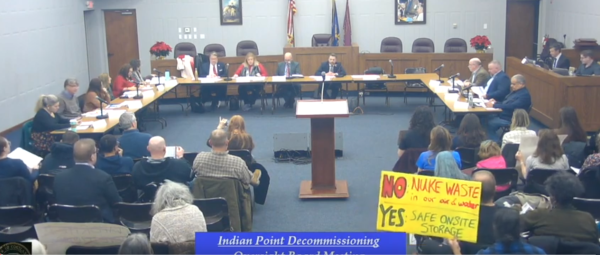
Holtec plans to take the fight to court
General work continues to clean up the site. But Holtec says that because they can’t release the water into the river, their plan to dismantle buildings including the reactor vessels, has been put on hold.
Now a representative for the company says that Holtec plans to pursue approval to dump the water by challenging the law.
“You can assume at some point there will probably be litigation over that,” Patrick O’Brien, a spokesman for Holtec, told The Herald this week.
At the December meeting, Holtec discussed two alternatives they explored for disposing the water but ruled them out. One came from a vendor who proposed but then withdrew an idea of using a chemical process to remove tritium from the wastewater. The other option would have grown a crop of plants with the water and then removed it. O’Brien said the company is also exploring the cost to truck the water off-site.
Holtec is also pursuing a state permit to release the water into the Hudson River. For its 40 years of operation Indian Point’s wastewater was released into the river and monitored before being banned last year.
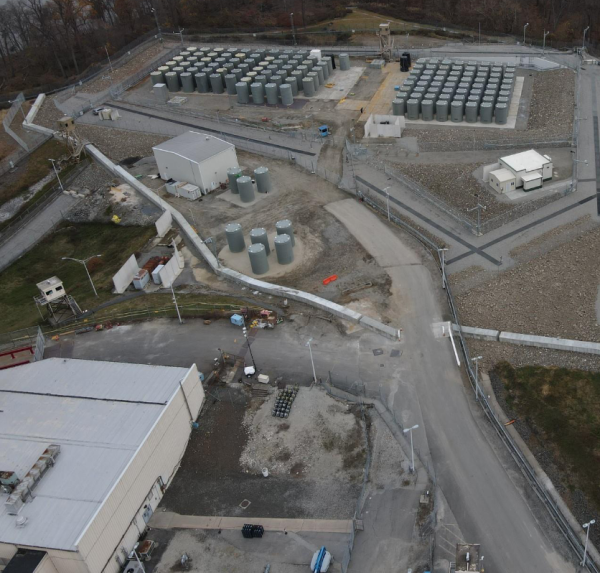
According to a spokesperson for the state Department of Environmental Conservation (DEC), the agency continues to work closely with federal regulators, Holtec, local officials, and the State’s Decommissioning Oversight Board to ensure the site is cleaned up in a safe, thorough, and prompt manner.
If a completed application were submitted for the permit, a draft permit would be released for public review and comment.
Holtec must comply with state law, critics say
At the December oversight board meeting, critics of Holtec, featuring heated comments by board members Richard Webster of Riverkeeper and state assemblywoman Dana Levenberg, insisted that the company must abide by the new state law.
“Ultimately, it is Holtec’s responsibility to come up with alternatives to discharging the water, and it is surprising that they failed to have alternative plans ready to go given that there has been a lot of vocal opposition to dumping for nearly a year,” Assemblywoman Levenberg told The Herald.
“Alternatives have been discussed at Decommissioning Oversight Board meetings and among members. At present, I think we should be looking at on-site storage. We have heard at DOB meetings that there are tanks that can store wastewater for many years without leaking, and at the next meeting we are supposed to be hearing from an expert, Arnie Gundersen, who will discuss methods for ensuring the safety of long-term on-site storage for the surrounding community.”
Victoria Leung, the staff attorney for Riverkeeper, echoed the call for onsite storage of the water.
“Riverkeeper’s position, and this has been our position before discharge of the water into the Hudson became illegal, is that wastewater should be stored onsite for a minimum of one half-life. That will give us enough time to figure out what to do with the water after that period and also allow time for technology to evolve,” Leung said.
“Holtec is hoping they can decommission this site for less than what’s in the trust fund so they can take home whatever is left over. At other sites they have mentioned that with inflation they’ve had to wait and leave the money in the fund to draw interest a little bit longer and draw it down later when the financial situation is more favorable.”
Governor Kathy Hochul signed the legislation last August, which is intended to protect the economic vitality of the Hudson River Region by restricting discharges of any radiological substance into the Hudson River in connection with the decommissioning of a nuclear power plant.
“The Hudson River is one of New York’s landmark natural treasures, and it’s critical we stand together to protect it for generations to come,” Governor Hochul said. “My administration remains committed to protecting the economic vitality of the region and working closely with local communities who have advocated so passionately for this cause.”

“The law aims to safeguard communities in New York’s Hudson Valley region. The Administration will continue to work closely with federal regulators, Holtec, local officials and the State’s Decommissioning Oversight Board to identify feasible and acceptable alternatives of wastewater disposal so that decommissioning Indian Point can continue, jobs can be preserved, and the site can be cleaned up in a safe, thorough, and prompt manner,” the governor said.
Role of the NRC in overseeing nuclear operations
The federal Nuclear Regulatory Commission (NRC) oversees the monitoring of materials to ensure that operators stay within federal limits before the release of any treated water.
Neil Sheehan, a spokesperson for the NRC, acknowledged that Holtec filed a notice of the delay in decommissioning Indian Point and said the agency does not rule on issues of state vs federal control.
“Typically, if the plant owner decides they want to challenge a state law that on its face appears to preempt federal law, they could bring a challenge,” Sheehan said.
“For now it’s a moot issue because the company has decided they’re not going to do anything with the water for now. They sent us a notification recently that said they’re delaying their decommissioning of Indian Point by eight years and part of that is they want to determine what their strategy is for dealing with the water.”
Sheehan explained how water is typically disposed. “We don’t dictate to the company how they plan to dispose of the water. At Vermont Yankee all the water there is shipped off-site,” he said.
“There aren’t many instances where the decision has been made to store the water onsite. In most cases they are discharging it the way they did during the operational life of the plant, which is typically to the nearest body of water. They put it into a tank, they mix it up, they sample it, and then there is a tremendous amount of dilution that takes place before it goes to the river and then it dissolves further in the river,” Sheehan said.
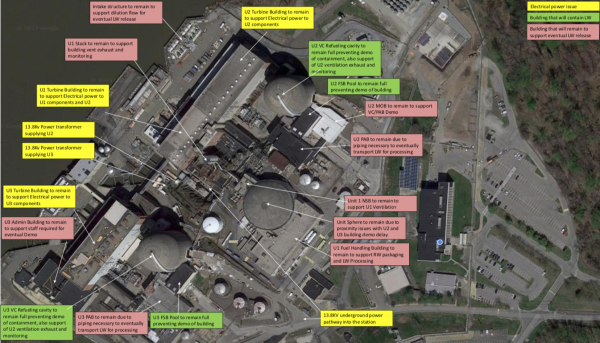
O’Brien maintains that Holtec would base a potential court challenge on the evidence of the safety of current disposal practices. Environmental advocates point to their evidence that they say disproves that claim.
“It’s somewhat frustrating because it’s a known in the industry that the science behind it has shown that it’s safe with environmental monitoring done at all the sites, said Holtec spokesperson O’Brien.
“Unfortunately it’s become a perception vs science argument which is tough. It’s an emotional response. I get the emotion behind it. Trying to educate people to understand the science behind it is a challenge,” he said.
About the Contributor
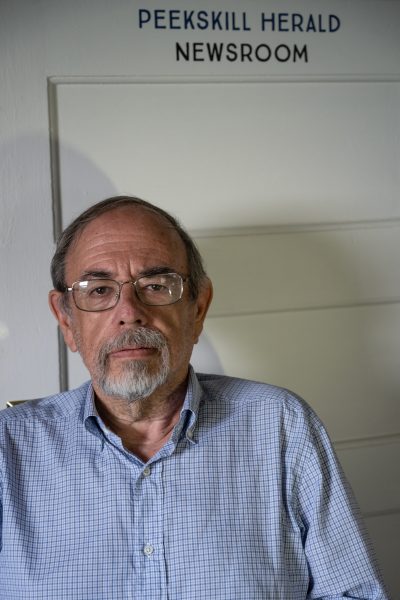
Jim Roberts has been in this business for more than 35 years (hard to believe) and still learning every day. A third-generation Peekskill resident, he started as a lowly researcher at the Westchester Business Journal in 1986 and learned how to be a reporter from many veterans in the field. He’s worked in private companies, Connecticut state government and wrote for the Co-op City Times for 10 years before retiring from full-time work in 2019. Roberts wants to contribute to building the Herald into a news website for residents who care about what’s happening in Peekskill.
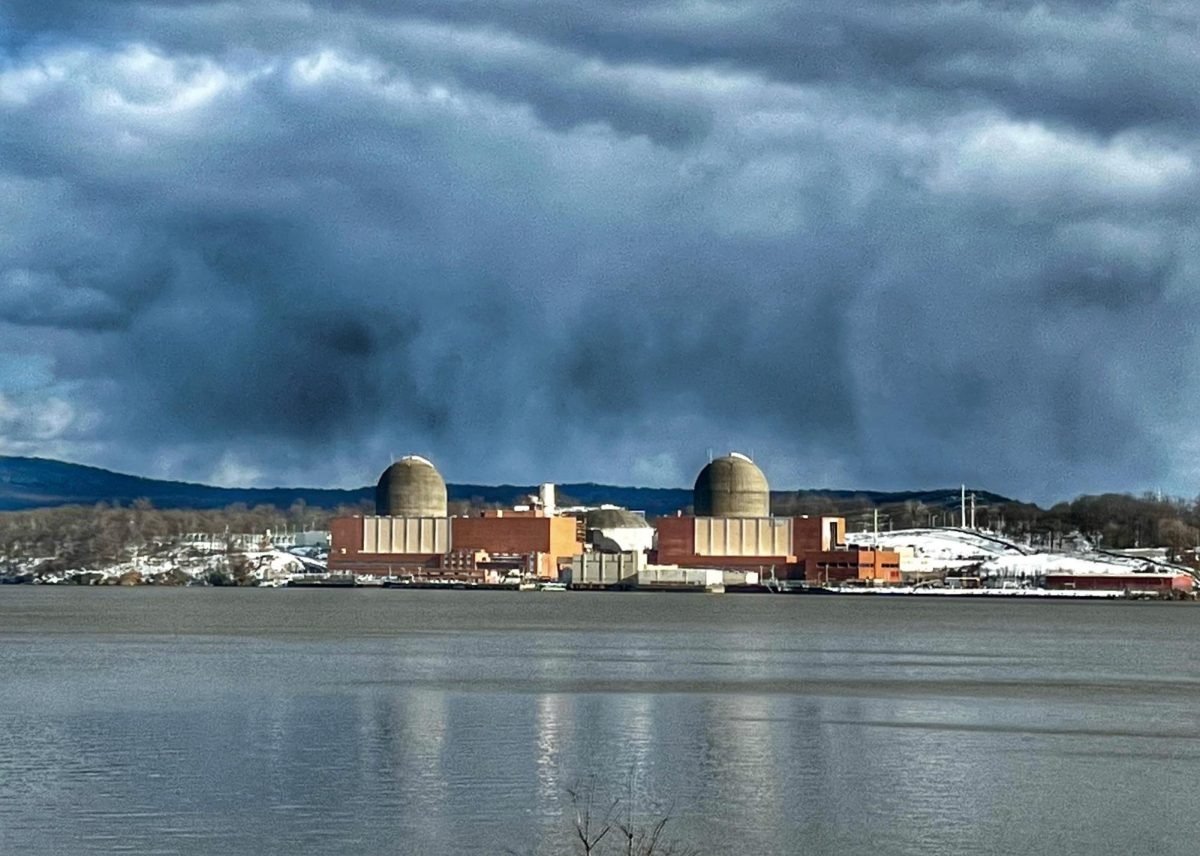
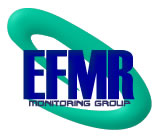
No comments:
Post a Comment